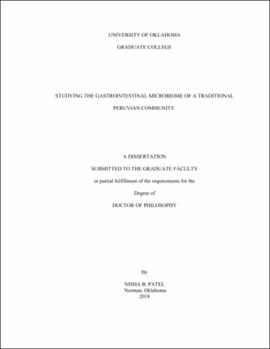| dc.description.abstract | The human gastrointestinal (GI) tract is an ecosystem that is home to a plethora of bacteria, archaea, microeukaryotes, and viruses, collectively termed the “gut microbiota” or “microbiome” when referring to the genetic material of the microbiota. In order to better characterize global gut microbial diversity, non-industrialized population groups with distinctive lifestyles and diets should be included in gut microbiome studies. The microbial diversity of a traditional Peruvian community was explored using both culture dependent and independent approaches. First, an enrichment of a fecal sample from a community member was prepared using xylan as the primary substrate. Amongst the recovered isolates, two novel genera and one novel species belonging to the Peptoniphilaceae family, were identified and named as Ezakiella peruensis, Citroniella saachavorans, and Peptoniphilus catoniae. Second, the genomes of these novel bacteria were assembled and analyzed to examine the physiological potential of four phenotypic traits commonly used to discriminate these taxa from other members in the Peptoniphilaceae family. Finally, the use of Propidium Monoazide (PMA), was applied to human fecal samples for its ability to neutralize DNA from compromised bacterial cells, allowing for amplification of only DNA belonging to viable bacteria during downstream applications. While the proportion of live cells in each sample varied, PMA treatment did not significantly reduce microbial community richness and phylogenetic diversity. However, differences in the relative abundance of gut microbes, Faecalibacterium, Holdemanella, Catenibacterium, Dorea, and Senegalemassilia were observed. | en_US |
